I hemmed and hawed for weeks about whether or not I would actually go to the Northwest Tea Festival this year. Thankfully, my poor impulse control got the better of me, and – boy! – am I glad it did. To miss this tea-binge-o’-thon would’ve been act of idiocy. I present to you – fine tea reader(s?) – my disorganized and picture heavy coverage of Day #1 of said festival o’ the leaf.
(NOTE: This coverage will not include the workshops that were offered because…er…I couldn’t afford them. Being poor sucks. The end.)
Getting There
Washington, I hate you.
Seattle, I hate you more.
Not only were their cops on every exit along the highway getting there, but once I made it to Seattle proper, the roads turned into some other dimension. I swear, it was like the roads in Seattle were designed by someone on barbiturates. Same could also be said for the Seattle Center, which was difficult to navigate through. If it weren’t for signs pointing to the event, I would never have found it.

The Tasting Booths
I guess I’ll get my one gripe out of the way early. The way they organized the private tasting this year was downright awful. Patrons were only allowed two tasting tickets per day. Keep in mind that the event was only for two days – total. Granted, they likely did this as a way to funnel taster traffic. The event was crowded. Still, there had to be a better way to handle it.
Luckily, most of the focused tastings were featuring teas I already knew about extensively. There were two that I felt I had to do, though.
The first tasting was a 2012 Ice Island Pu-erh hosted by Guitian (Becky) Li – a certified tea master. As she told the large group of fifteen, the leaves for this beengcha were picked from high elevation, ancient tea trees – some as old as five hundred years. Unfortunately, it wasn’t an aged version.

That said, the tea itself displayed differing characteristics per steep – starting off grassy and sweet for the first two, and transitioning to a more winy presence in the successive infusions. I could only imagine what this pu-erh would be like given five years to age. Guitian handled the crowd like a seasoned pro.

On an unrelated note, before the tasting even began, I disrupted the proceedings when I realized I’d lost my teacup in another room. I made a mad-dash from one booth to the next to retrieve it – pants almost falling down.
The second tasting I attended later in the day was put on by Brett Boynton, co-owner of the Phoenix Tea Shop in Burien, WA. I had wanted to meet this guy for months ever since we traded tea barbs over Twitter. That and he had a fantastic tea blog I checked in on regularly.

He was just as quirky and irreverent in person as he was online. And I truly thought the way he handled a crowd of newbie tasters was the stuff of legend. Keep your eye out, you will hear about the “Burien Tea Ceremony” someday. Hint: It involves jokes. Lots of jokes.
The teas he featured were ones I had tried from their shop before – Korean green teas. Jungjak and Daejak, respectively. But it was a treat to see him doing the prep work for them. Like his partner in tea-crime, Cinnabar Gongfu, he’s a character.
Vendors
The first vendors I explored – in true “comfort zone”-y fashion – were the ones run by people I already knew. First up, The Jasmine Pearl Tea Merchants. Yes, I know, I hang out at their Portland shop all the time. I happened by their booth on several rotations – perhaps too much. However, I tried to hang back because they were slammed with visitors the entire day.
My main reason for hovering, though, was the unveiling of two new blends which used A-MURR-ican-grown tea as a base. They struck a deal with the Sakuma Bros. to use their white tea and new (experimental) black tea for locally-sourced blends. Oddly enough, I preferred the black blend over the white blend; strange because I liked the white tea by itself better than the black. Both were well put together, though.

Right next to the JP folks was the Phoenix Tea House booth, and it was equally as crowded. However, I did manage to scissor my way through to mooch a bit of their Ali Shan and copious amounts of their hei cha (post-fermented tea). Particularly worthy of note was a hei cha that was blended and bricked with rose petals. It was strangely sweet on the front, which is a trait I never associated with hei cha – at all.

Cinnabar Gongfu noted that she was skeptical about them because they were pressed into heart-shapes. (The name for them was “Rose Hei Cha Hearts”, after all). I didn’t come back to buy one until later, but they had unfortunately run out of ‘em within the first couple of hours. Not surprising. However, I did settle on a bit of bricked hei cha…which I’m having right now as I write this.
Of the new tea vendors I knew nothing about, first on my sip-list was an outfit out of…er…someplace in Washington called Snow Lotus Fine Teas. It was owned and operated by Lavina Rao, and she was presiding over the tasting at their booth. The one I took notice of was their Yunnan black – dubbed Honey Orchid. It was a malty beast of a Dian Hong. Naturally, I loved it.

After visiting their website, they are officially an outfit I have to try more stuff from. A lot of their offerings fall into my quirky taste of unique. Their black and white tea selections are phenomenal.
Teahouse Kuan Yin is based in Seattle proper, and I have no clue why I hadn’t heard of them until now. Guess I’ve been under a rock or something. They had a unique tea for the tryin’, which they dubbed “Taiwanese Assam”. It was from the Assamica varietal and reminded me of…well…just that, but with a bit of a Ruby 18 characteristic for good measure. I almost bought some, but it was only available in 2-oz. bags. I was on a budget.

There were plenty of other great vendors that were represented – especially some big-named ones – but I only wanted to cover the unique“teas” here for good measure. You understand, right reader? Good.
Presentations
I had one goal in mind when attending this festival and that was to finally meet James Norwood Pratt – the proverbial rock star of the modern-day tea renaissance. Others have touted his books and personal appearances, but I had yet to experience them for myself. How could I truly be a tea nerd without picking that man’s brain.

His informal lecture was on the subject of “The Tea Renaissance” in the U.S. and the different factors that led to it. He also reflected upon the dour state of the American tea industry after World War II and lamented the existence of mass-produced, low-quality teabags. What I found particularly interesting was the light he shed on white tea popularity in the U.S.
I had not been aware that white tea experienced a boom in the late-90s thanks in no small part to…Britney Spears. You heard right. Apparently, she was a regular customer at Chado – a popular tearoom in L.A. Somehow, someway, it got out that her personal trainer recommended that she only drink white tea for the higher antioxidants. Teeny-boppers the world over demanded white tea en masse soon after. Naturally, that made me rethink my entire white tea obsession.
He closed off the presentation with a Q-and-A. The only question I could think of for him was one that was un-tea-related. I raised my hand.
I asked, “Is it possible to get a picture with you?”
Laughing, Pratt replied, “You’ll have to ask my wife.”
“I’m his wife,” came a voice behind me.
Well-played, Team Pratt. Well-played.
Right after Norwood Pratt’s presentation was an interesting seminar on pu-erh, presided over by Jeffrey McIntosh of McIntosh Tea. He is a pu-erh specialist that spent several years learning from different tea masters in China. One of the facts he elaborated on that I hadn’t known was the varietal of tea tree used for pu-erh teas. The large leaf Yunnan tea tree varietal was Assamica! Okay, that doesn’t mean anything to most people, but my mind was blown. I stayed long enough to try some Wild Arbor pu-erh but had to depart for a tasting soon after.

Which brings me to…
Meet-and-Greets
 I’ll bring this winded entry to a close with an excuse to show off a bunch of pictures with blurbs. Why? Because I’m a dork. Deal with it.
I’ll bring this winded entry to a close with an excuse to show off a bunch of pictures with blurbs. Why? Because I’m a dork. Deal with it.
As mentioned above, my primary goal for the NW Tea Fest was to get a photo with James Norwood Pratt. I ended up also walking away with his latest edition of The Ultimate Tea Lovers Treasury. Of course, I also got him to sign it, and – like a true fanboy – made a cheesy grin when the snapshot was taken. He was an absolute pleasure to meet. I want to be just like him when I grow up. (For the record, I’m 36.)
After meeting JNP, I finally had to meet Devan Shah, the purveyor of the Chado Tearoom. I’d heard his name bandied about in tea circles, but honestly hadn’t been familiar with Chado until this festival. I must say, I was impressed with some of his wares. That and he was kind enough to oblige a photo.

This one was a two-for. Chuck – The Jasmine Pearl’s co-owner – had informed me that Richard Sakuma (of Sakuma Bros.) was going to be on hand at their booth. I had wanted to meet him for over a year after having tried their Sun Dried White Tea. The man was humble and good-natured and put up with my many questions with wonderful patience. I absolutely needed a picture with him and JP’s Chuck.

It wouldn’t be a trip to Seattle unless I caught up with the city’s resident “Tea Geek” – Michael J. Coffey. Strangely enough, he spotted me before I noticed him. He was donned in a lab coat and a TeaGeek.net nametag. We traded barbs and posed in front of a tea plant because…well…tea plant!

On one of my many pass-throughs of the Phoenix Teahouse booth, I demanded a photo-op with the owners Brent and Cinnabar. Both bloggers have my dream job.

I also caught up with fellow Portland teapal, David Galli of Portland Tea Enthusiasts’ Alliance outdoors.

I finally met Chris Shaw of Contemporary Clay. His various teaware creations were on display at different teashops I’d frequented. Really genial guy.

And last, but certainly not least, I had shwarma for the first time. The Avengers are right; it tastes like EPIC. How could I not draw this to a close with shwarma?!

In short, a spectacular day of hyper-caffeination.
After I made my fond farewells to everyone at the fest, JP Chuck had said, “Don’t fall asleep at the wheel.”
“I WON’T!” I said…happily hopping out the door.




















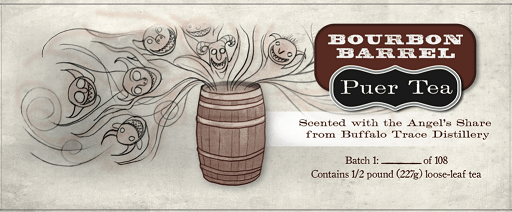
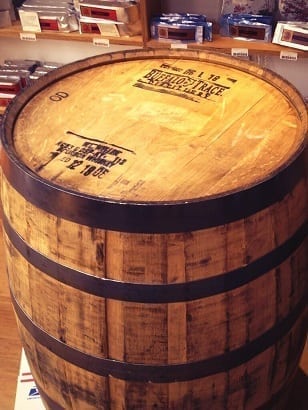
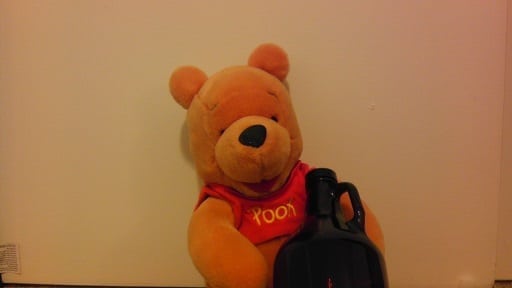
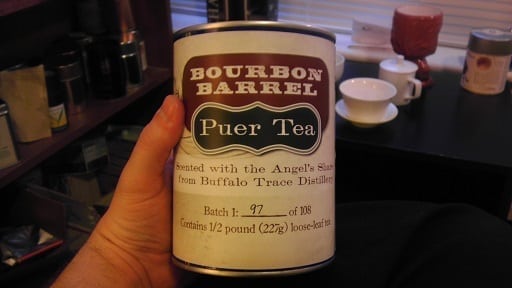

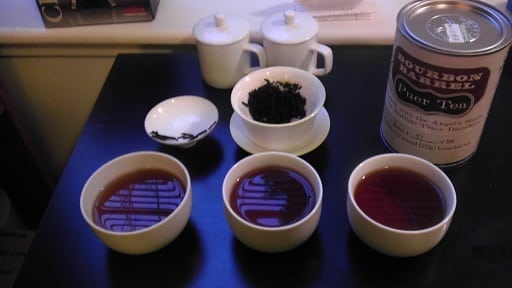
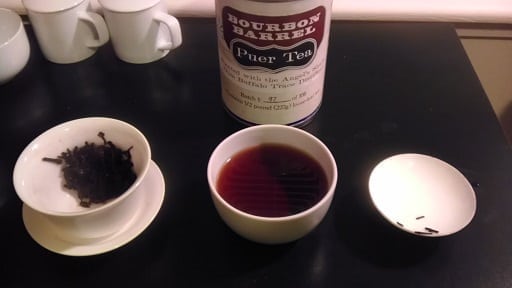
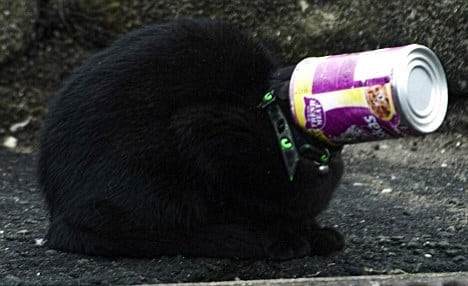





 As an unemployed person, one of the most difficult tasks is literally getting out of bed. Let’s face it, joblessness is depressing. Why does someone want to get started when it feels like their world is ending? The key is a self-fueled kick in the pants.
As an unemployed person, one of the most difficult tasks is literally getting out of bed. Let’s face it, joblessness is depressing. Why does someone want to get started when it feels like their world is ending? The key is a self-fueled kick in the pants.
 If you – fair reader – are anything like me, you hate writing about yourself in a clinical manner. The urge to self-deprecate is a strong one. Same with wanting to sell yourself short. Some have a magical grasp of inflating their accomplishments; I am not one of them. Plus, I’m not very good at summarizing my abilities and accolades (whatever they are) concisely.
If you – fair reader – are anything like me, you hate writing about yourself in a clinical manner. The urge to self-deprecate is a strong one. Same with wanting to sell yourself short. Some have a magical grasp of inflating their accomplishments; I am not one of them. Plus, I’m not very good at summarizing my abilities and accolades (whatever they are) concisely.
 As much as I hate to admit it,
As much as I hate to admit it, 
 Congrats! You’ve made it to an actual interview. Someone has taken the time out of their busy schedule to interrogate you for thirty minutes to an hour. But you don’t want to come across as a complete tool. (Unless they’re looking for someone useful.)
Congrats! You’ve made it to an actual interview. Someone has taken the time out of their busy schedule to interrogate you for thirty minutes to an hour. But you don’t want to come across as a complete tool. (Unless they’re looking for someone useful.)











 I’ll bring this winded entry to a close with an excuse to show off a bunch of pictures with blurbs. Why? Because I’m a dork. Deal with it.
I’ll bring this winded entry to a close with an excuse to show off a bunch of pictures with blurbs. Why? Because I’m a dork. Deal with it.


















